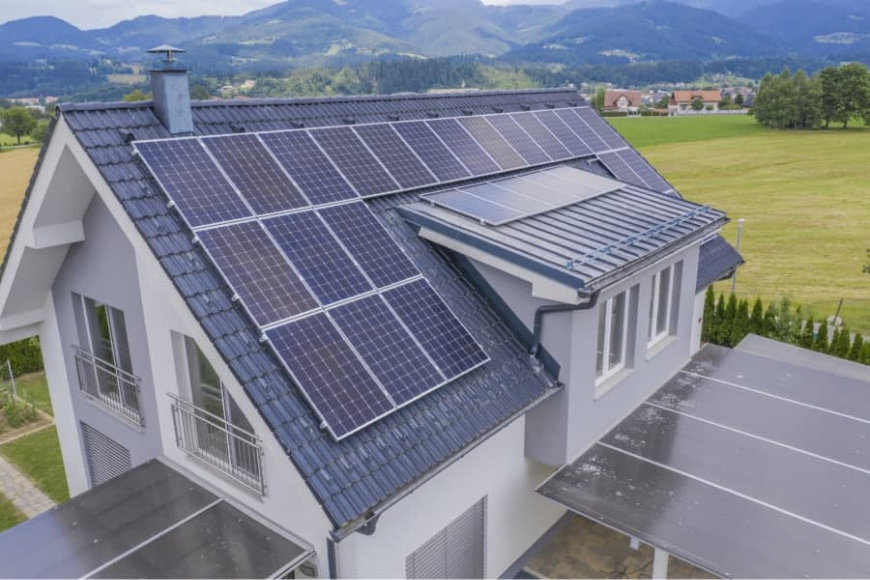
Photovoltaic energy and self-consumption
There is a growing commitment to self-consumption in terms of energy generation. Governments, industry and individuals are realising that clean and renewable energies, such as self-generated photovoltaic energy with the help of solar panels, provide humanity with efficiency and service at a competitive cost and are an excellent alternative to ensure environmental sustainability, savings and quality.
Photovoltaic self-consumption in times of pandemic
The pandemic has been responsible for the fact that many of us have considered other forms of subsistence that are appropriate for the situation we are living in and that are careful with the environment. The impossibility of moving, or the costs and difficulties of relocation, have led to a focus on national and local development and self-consumption.
As far as photovoltaic self-consumption is concerned, the sun has virtually infinite availability. This means that they can have an impact on the independence of countries or companies, as they do not need the oil or gas producing markets. It reduces losses in transmission and distribution networks and avoids the transit of energy over many kilometres of cables. For its maintenance, it can also promote local employment.
Installing solar panels to generate our own electricity is a solution that works in a simple way and can be applied to industry as well as to our homes and all types of residential buildings, as the panels can be for individual or shared use.
Industrial and residential photovoltaic self-supply are similar, they barely differ in size, much larger in the case of industry, with a higher consumption and more hours of operation, reaching 24 hours, while in a residence it would be limited to daytime hours.
Solar photovoltaic systems can either be connected to the grid and discharge the surplus energy, and then receive financial compensation, or they can be isolated, i.e. disconnected from the grid. In the latter case, the surplus energy can be stored in batteries to be used when needed.
Renewable energies are competitive and reduce costs
The cost competitiveness of renewable energy generation has reached historic levels. Renewable energies are achieving parity in price and performance with conventional energy sources, as well as gaining in efficiency and stability.
Consumers are now looking for more reliable, cost-effective and environmentally friendly sources of energy, and emerging markets and companies are also opting for clean energy and expanding the scope of their solar energy purchases on their development path. New technologies enable lower costs and the integration of these sources, thus contributing to the necessary and inevitable global energy transition.
The savings generated by a photovoltaic installation can reduce the cost of electricity bills by up to 50%.
In addition, many local councils offer subsidies for installation. Construction and Works Tax is subsidised at 95% and Property Tax varies from municipality to municipality, but in some cases they can achieve a 50% reduction for several years.
Towards a photovoltaic Spain
The sun will be the energy of the 21st century and of this year, also the 21st, and in Spain we have plenty of it. The government has just approved the installation in our country of solar energy plants that will reach 3,000 megawatts of renewable energy.

Paneles solares
The solar photovoltaic energy sector is in good health in our country, both in terms of its position in the manufacturing chain of this type of technology and its important contribution to GDP and the generation of direct and indirect jobs. We have already analysed the economic evolution towards renewable energies in previous news items. In order to improve the current figures over the next few years, an increase in the domestic manufacture of photovoltaic components is needed, taking into account the favourable conditions of our territory and the abundance of solar resources available to us.
It is possible that the photovoltaic sector could be key to Spain’s economic recovery after the pandemic.
A sustainable future is the only option
At the moment, COVID-19 and its terrible consequences occupy most of our daily concerns and projections for the future, but we should not forget that the only future with guarantees for life on the planet will be one in which clean and renewable energies go from being an excellent alternative, as we pointed out above, to becoming the only option. Although considerable progress has already been made in raising awareness in the political and social spheres of the imperative need to protect the environment, there is still a high level of early deaths caused by pollution resulting from the burning of fossil fuels, and CO2 emissions have a serious impact on the climate.
The International Energy Agency in its report ‘World Energy Outlook 2020’ takes last year’s data and sets out the four possible scenarios: Stated Policy Scenario (STEPS), Delayed Recovery Scenario (DRS), Sustainable Development Scenario (SDS) and the Net Zero Emissions Scenario for 2050 (NZE2050). In any of these, renewable energy takes a leading role. In the best-case scenario, solar photovoltaic energy will be the protagonist, accounting for more than half of the growth between now and 2050.
At Keyplan, we are committed to the environment and we adapt our solar photovoltaic installations on roofs or solar farms to legislative changes. We are one of those companies that contribute to the renewable energy sector, specifically photovoltaic energy, being at the forefront in our country, thanks to our extensive experience in the field of energy engineering, professionalism and variety of services.





